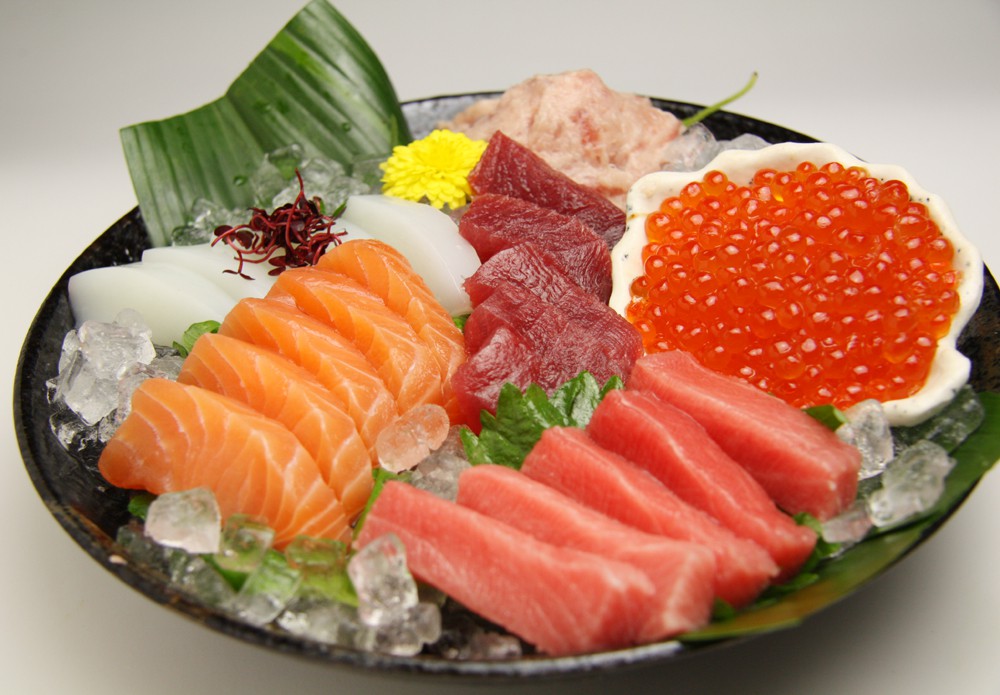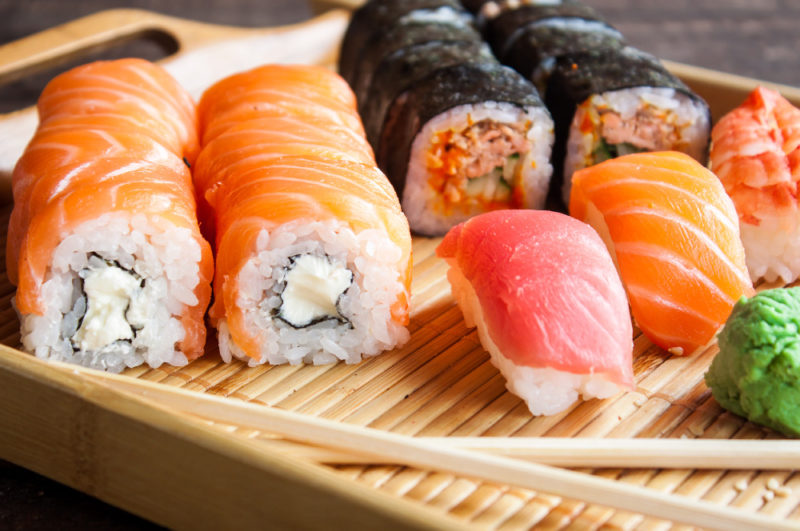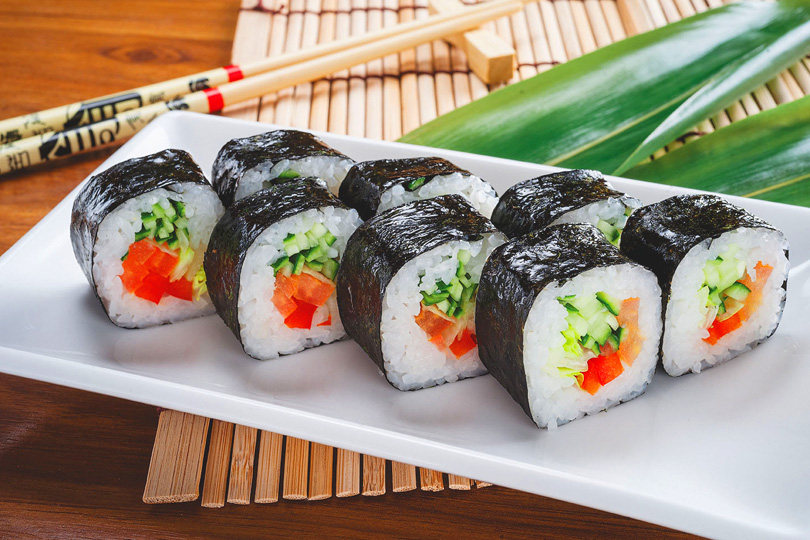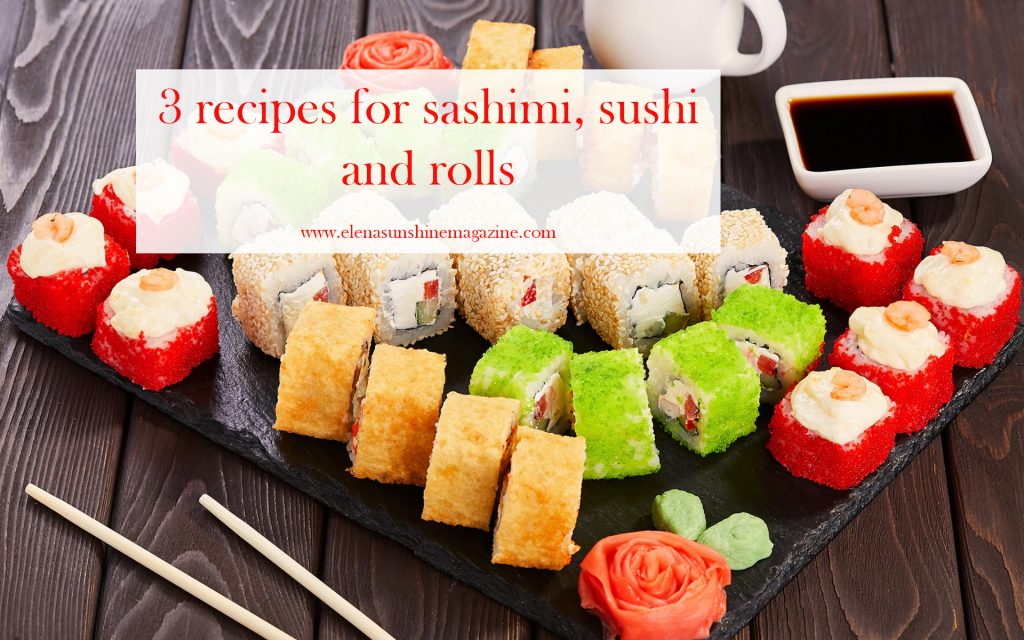Do you like sushi? Then prepare them yourself. It is not as difficult as it seems, and most importantly – the quality is guaranteed. 3 recipes for sashimi sushi and rolls.
I want to tell you how to start with the simple and gradually move on to the more complex – to rolls, and introduce you to the basic rules that should be followed if you want to cook sushi and rolls delicious and high quality.
Ingredients
Ready-cut trout (salmon) 2 packs
Sushi rice 1 pack
Rice vinegar
Soy sauce
Nori packaging
Pickled ginger
Avocado or fresh cucumber
Crab stick
Wasabi
Red caviar and other products optional.
Now there are many good fish that have been processed by marinating, salting, smoking. So we will buy it. If you do not have the skills to cut fish very thinly and do not have a special knife for this, it is better to buy ready-made cuts of trout, tuna, pink salmon, walleye, salmon and other fish. In addition, you can buy shrimp, mussels, squid for sushi, they are very suitable, just prepare them in advance, following the instructions on the package. Slicing is very suitable for sashimi.
We prepare for the art of making sushi in advance, buying all the necessary products.
SASHIMI. 3 recipes for sashimi sushi and rolls.

How to buy fish for sashimi?
If you are going to cook this Japanese dish at home, buy fish only from those whom you trust, and who without a doubt will have the freshest. When buying fish, pay attention to its scales. It should be smooth, undamaged, shiny, and possibly moist, but not slimy. The fish’s eyes should be clear, the gills red or pink, the flesh firm, and the tail stiff. The fillet of fish should be dense to the touch and look neat, with smooth, not ragged edges.
Preparation
Fish should be kept in the refrigerator after purchase. It should be processed in a cold room and with cold hands. Therefore, before removing it from the refrigerator, hold your hands for a couple of minutes under a stream of cold water. You need to process the fish very quickly, and after you cut off the right amount for yourself, the rest should be immediately put in the refrigerator. Fresh fish sashimi should be eaten within 4 hours.
Sashimi is one of the most popular Japanese dishes. These are thin slices of fish of different varieties or seafood that are served on a platter in an arrangement of vegetables. It is not clear – what to cook here? Sashimi perfectly reflects the very philosophy of Japanese cuisine, in which the sign of the chef’s art is the ability to make interesting combinations of various ingredients. Sashimi is always spread out on a tray of 3, 5 or 7 slices. This is not much, however, sashimi is not eaten to satisfy hunger. This is a treat to savor. Vegetable addition to sashimi is carrot, daikon, seaweed, lemon, pickled ginger, wasabi, zucchini. Vegetables are grated on a fine grater or thinly cut and laid out in small slides.
As for the use of wasabi and pickled ginger, they are a preventive tool, since they have pronounced antibacterial properties.
SUSHI. 3 recipes for sashimi sushi and rolls.

Sushi is a handful of specially prepared rice that is pressed with seafood or wrapped with a thin slice of fish.
Let’s focus a little on rice. If there is no special rice, you can take coarse-grained rice. Rice is washed to clear water, then spread out a thin layer and dry for 30 minutes. Boil the rice in lightly salted water for 20 minutes under the lid on low heat. Add water according to the instructions on the package or 1: 2. Rice vinegar (at the rate of 6 tablespoons per 10.58 oz of raw rice) is slightly heated and dissolved in it 2 tablespoons (the calculation is the same) of granulated sugar and a pinch of salt.
Cool and mix with rice with careful bottom-up movements. Sushi is made by hand dipped in tezu, a mixture of rice vinegar mixed with water. Which is poured into a special bowl and is used for wetting hands during the preparation of sushi and rinsing them after working with rice. Serve the sushi spread out on a plate, between them you can put slices of fish and seafood. Soy sauce and wasabi are served separately.
ROLLS

But for rolls, you will need a more extensive set of products. And a little bit of ability to wrap these products with a mat in nori (dry seaweed). But what a space for culinary creativity here! By combining products, you can create a variety of roll options.
And you can make different rolls. Here are just three most common options:
Hosemaki thin rolls,
Futomaki thick rolls,
Sakamaki rolls inside out. These rolls can be sprinkled with sesame seeds or caviar.
Place the nori leaf, shiny side down, on a bamboo mat. Moisten your hands with a small amount of tezu, take a handful of prepared rice and spread it evenly over the nori, leaving the edge free. This edge is then moistened with tezu – it will fix the roll when rolling.
Using your index finger, smear the rice in the middle with the desired amount of wasabi, moving from the middle to the edges.
Along the layer of wasabi put strips of fish or cut in half crab sticks, vegetables. Lift one edge of the bamboo mat.
Holding the mat and filling with the fingers of both hands, start rolling the Mat together with the nori leaf, trying to press evenly.
Continue forming the roll, but now press harder to compact the rice. If necessary, repeat the last step. Rice along the entire length of the roll should be dense and even.
Traditionally, the rolls are cut in half, and then each half is divided into 3 parts.
Top rolls can be decorated with caviar, shrimp.
Sushi and rolls can be placed on one plate along with small mounds of vegetables, sliced fish and seafood. Soy sauce and wasabi horseradish are served separately.
Bon Appetit!

You can buy an apron with our logo 🙂
https://www.redbubble.com/i/apron/Elena-Sunshine-Magazine-by-Michaelbor76/52450511.6ZXWR?asc=u



